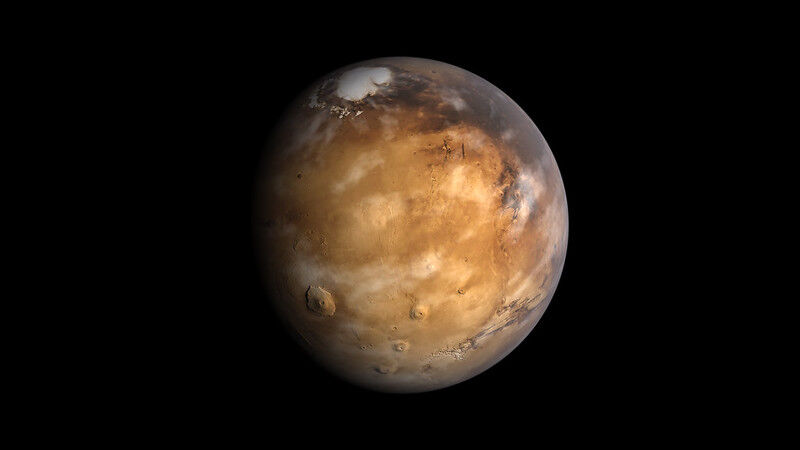Editorial: Ingenuity and a historic space flight
The ISD Editorial Board discusses the historic flight of the helicopter Ingenuity in the atmosphere of Mars.
April 17, 2021
April 19 (Earth time) marks a historic first in aviation and an important milestone in spaceflight. Ingenuity helicopter is scheduled to make its first flight in the Martian atmosphere. Success will mark the first flight of an aircraft on another planet and an important step toward exploring the Martian landscape.
What’s the big deal about flying a helicopter on Mars? Lot of things!
Physically, it is much harder to fly an aircraft on Mars because of the much lower density of the atmosphere when compared to Earth. At sea level on Earth, the density of the air is 1.225 kg/m^3. On Mars, the air density is approximately 0.020 kg/m^3. As Ingenuity helicopter’s rotor blades spin around, they will have only 1.6 percent of the air to interact with as they would on Earth.
The challenge of creating enough upward force to fly with such little air is offset partially by Mars’ lower gravity which is about one-third that of Earth. Still, every effort had to be made to reduce the weight of the helicopter while still including important data capture equipment such as cameras.
In addition to this already challenging task, Ingenuity cannot be piloted by someone on Earth. The distance between our planet and Mars means that even the most high-speed signals can take up to 20 minutes to bridge the gap. Given the current planetary positions, a round-trip signal to the Ingenuity helicopter would take approximately 24 minutes: 12 minutes for the signal to get to Mars and 12 minutes back for NASA to know if the signal was received.
Autonomy is nothing new though, and certainly wasn’t the biggest challenge NASA faced with developing Ingenuity. But it could present the biggest challenge in actually testing the helicopter. Already, NASA has had to remove and install new flight control software on Ingenuity, a process that is much harder than it sounds thanks to the helicopter being over a hundred million miles away.
And yet, Monday, if it hasn’t already, Ingenuity will fly!
Aircraft on Mars presents an amazing opportunity as humans look to expand beyond Earth. Small aircraft today such as Ingenuity will lead the way to larger and more powerful modes of transportation around Mars.
Ingenuity is only scheduled to make a simple 30-second flight, straight up and straight back down, but it will help determine the viability of future aircraft that could be used to study the Martian atmosphere to help scientists decide how Martian colonists or explorers might produce oxygen for breathing or rocket fuel.
Successors to Ingenuity could accompany the rovers that bring them to Mars as scouts. The small aircraft could provide their parent rovers with optimized routes to research locations on Mars that the rovers couldn’t see from the ground. Sensors and cameras aboard the aircraft when synchronized with equipment on the rover can be used to refine data and collect parameters NASA has been unable to with just a single vehicle.
Can Ingenuity do any of these things? No, but it is still a massively crucial step. Remember, at the time of this writing, NASA still hasn’t demonstrated the ability to fly an aircraft on Mars, and none of the previously mentioned abilities will be even remotely possible if we can’t figure out how to fly on another planet.
But Ingenuity is going to change that!
The excitement around space and the moon that America experienced in the ’60s and ’70s is on the cusp of being replicated. NASA, and this time private space companies, are on the verge of returning to the moon and taking it one step further to Mars. And they are doing it for pennies on the dollar compared to space race times.
Space is more accessible than ever and lots of brilliant research is being conducted to help us better understand our world and our place in the universe.
Ingenuity is not flashy. It won’t do any flips and the pictures it does take will be very similar to those sent back by its parent rover Perseverance. But it will still be a historic first, similar to that of the Wright brothers. Flight has captivated an empowered mankind for generations, and Ingenuity’s first will bring us that much closer to doing the same on Mars.

















